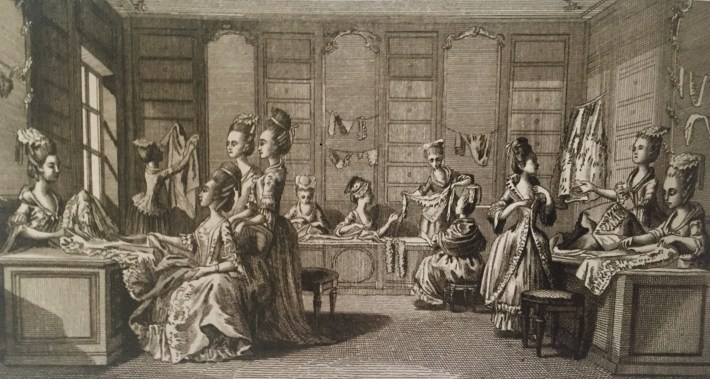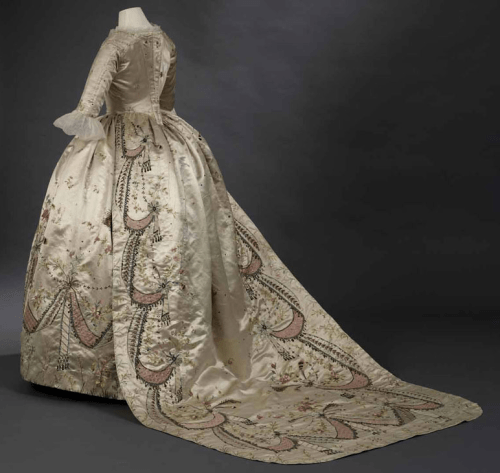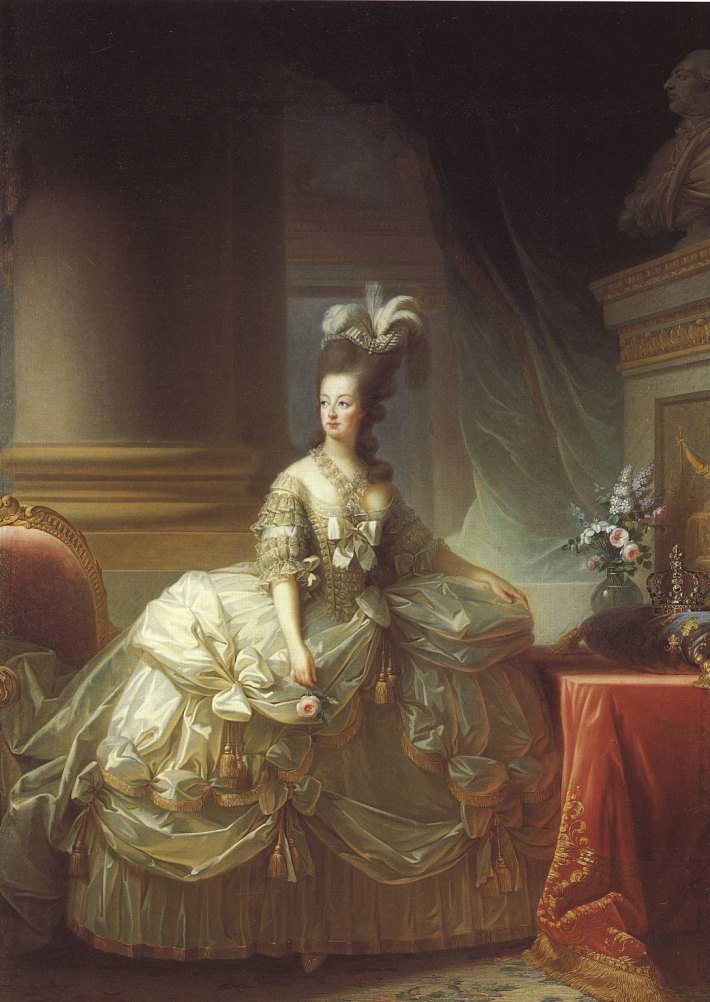
Happy birthday to Marie Antoinette’s premiere marchande de modes, Rose Bertin, born on this day in 1747. Bertin’s meteoric rise to success began in 1772, when she opened her own shop, after having apprenticed to a marchande de modes for years. She quickly developed an affluent clientele, but no one would prove as important to her career than the Queen of France, who became her patron in 1774. It was a relationship destined for fashion history.

A term not typically familiar to us today, marchande de modes literally translates to “fashion merchant,” but Bertin and her contemporaries were more than mere purveyors of the latest trends, they created them. A marchande de modes was a decorator, a visionary, rather than a dressmaker or milliner–the latter two professions produced the blank canvases for which Bertin would work her magic. First envisioning, then overseeing the execution of additions of lavish amounts of embroideries, laces, ribbons and other passementerie. On hats, the adornment was even more inventive, including feathers, fruit and flowers. But nothing stands alone as more imaginative—and perhaps more excessive— than Bertin’s designs for poufs. The elaborate coiffures in fashion at the time were the literal height of fashion and the most extreme examples of the excesses reached by fashion during this period.

As fashion consultant to the Queen of France, Bertin was instrumental in defining the extravagant fashions of the time. In fact, so renowned was Bertin’s influence on the Queen’s style, that Bertin became known in the press as the “Minister of Fashion.” An unofficial title at court, Bertin’s influence was actually very real, her influence international. At the height of her career, Bertin boasted over 1500 clients from some of the most affluent families in the world. In addition to Marie Antoinette, she dressed the queens of Spain, Sweden and Portugal, as well as numerous other members of the aristocracy, and celebrities.
While Marie Antoinette’s excesses in the way of fashion, as encouraged by Bertin, were perhaps one of the defining elements of her reign, they also, famously, proved her downfall. As author Kimberly Chrisman-Campbell aptly wrote “Marie-Antoinette is remembered as history’s definitive fashion victim.”[i] Indeed, the Queen’s decadent wardrobe became a symbol for the royal family’s debauchery, a visual representation of the unapologetic lifestyle of luxury and self-indulgennce that highlighted the incredibly wealth gap that existed between the royalty and their increasingly disgruntled and impoverished subjects.

It all reached a boiling point in 1792, when angry mobs stormed the château des Tuileries, where the royal family had been under virtual house arrest since the French Revolution began in 1789. Anyone associated with the aristocracy were targets for the new government who sought to purge itself of such wanton wealth. Bertin was lucky to escape the country with her life, a fate not shared by her beloved patron Marie-Antoinette who met her death by guillotine in 1793.
Bertin was eventually able to continue her work, but her business, and name, would never again reach the glory of the pre-revolutionary days. Times had change and with it, the fashions. Bertin died in 1814.[ii]


[i] Ibid, xii.
[ii] Unless otherwise indicated, all facts about Bertin used in this article were obtained from: Kimberly Chrisman-Campbell, “Bertin, Rose” The Berg Fashion Library, The Berg Fashion Library, 2005, Web, 2 Jul, 2015.
Thank you for this interesting post. There is a fascinating detail about Rose Bertin in Dr Caroline Weber’s book: “Queen of Fashion. What Marie Antoinette Wore to the Revolution”.
LikeLike